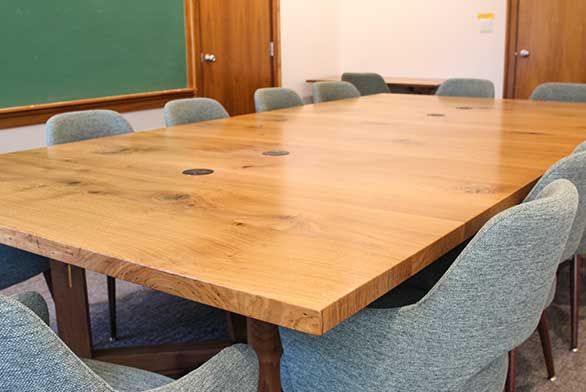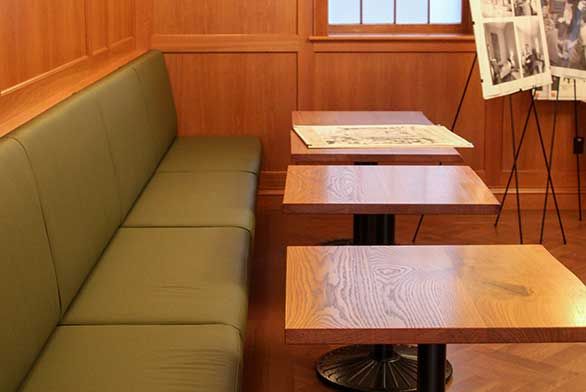The Legacy of the White Oak: A Tale of Renewal at St. John’s Annapolis
October 16, 2024 | By Hannah Loomis
In the heart of the Annapolis campus, nestled between the Paca-Carroll and Chancellor Johnson houses, there once stood a majestic white oak. For generations, it had been the centerpiece of the aptly named “White Oak Garden,” its sprawling branches offering shade and solace to countless students, faculty, and visitors.

By 2019, though, time had taken its toll, and the once-mighty tree showed signs of decline. A difficult decision was made: the tree must come down. For many institutions, this would be the end of the story. Not so for St. John’s College.
Ally Gontang-Highfield, the school’s Vice President of Finance & Operations and Chief Financial Officer, oversees all buildings and grounds operations for the Annapolis campus. Inspired by ongoing campus sustainability initiatives, she envisioned a new life for the oak even before knowing which precise form it would take. So, the college hired Fallen Lumber, a company from nearby Halethorpe, Maryland, with a mission as unique as its name.
Fallen Lumber provides ethically sourced lumber for a wide range of construction projects by harvesting or salvaging urban wood that would typically go to waste. Owning and operating their own high-efficiency mills and kilns allows them to oversee all aspects of production and certify their eco-credentials. In addition, the company plants new trees to replace the ones they harvested, making them a full-circle sustainable production company.
To begin the process for St. John’s, Fallen Lumber cut down the white oak in December 2020 and transported it to their factory, where they milled the tree into thick slabs. Then came a period of waiting; like a fine wine, these slabs needed time. They were air-dried for nearly two years—their grain deepening, their character developing—before being kiln-dried to prepare for use as lumber.
Meanwhile, architect David M. Schwarz (A78) and his eponymous firm, David M. Schwarz Architects (DMSAS), were brought into the fold. DMSAS, which had recently left its mark on campus with its Mellon Hall and Edensword Hall renovations, was tasked with a new challenge: bringing the white oak back to life in a new form worthy of its beloved source.

Working closely with St. John’s Annapolis and Fallen Lumber, Schwarz’s team designed multiple pieces of oak furniture for the campus, which Fallen Lumber brought to life from the reclaimed wood. Today, thanks to their efforts (and some help from John Davis and the Annapolis facilities team), a sleek long table sits in the Mellon Hall conference room where President Nora Demleitner and Annapolis Dean Suzy Paalman hold their meetings. New tables in the Annapolis Cup café in Edensword Hall also honor the oak’s legacy, and several have live edges—a testament to the tree’s natural beauty and the college’s appreciation for craftsmanship.
“Often when trees are harvested they’re just taken away and disposed of,” Gontang-Highfield reflects. “This project took a resource from our campus and preserved it for use on our campus. It was a really great opportunity for us.” And thanks to the teamwork of Gontang-Highfield, DMSAS, Fallen Lumber, and Davis, the oak tree will continue to witness daily life at St. John’s College for years to come.

